Dibyajyoti Sarma's Blog, page 42
April 9, 2015
Topic/ Cultural Diversity in the North East of India and ...
Topic/
Cultural Diversity in the North East of India and How it is Being Negotiated in an Increasing Fragmented World
Concept Note/
According to reports, there are at least 120 different terrorist outfits (all working from somewhere between India and Myanmar), from the seven states of North East India (Assam, Meghalaya, Manipur, Tripura, Mizoram, Nagaland and Arunachal Pradesh). All the outfits have similar goals; they want geographical independent or political self-rule for the ethnic communities they represent.
In an increasingly fragmented world, where Hindus are fighting for their supremacy and Muslims are fighting for theirs, the fight for the rights of an ethnic community sounds valid. The question, however, is whether these demands are feasible.
There are at least 100 different communities in these seven north eastern states, with their own languages and cultures, with their own gods and their own wines and their own clothes. Yet, for centuries, they have lived together, sharing the same geography. Politically, it may not have been an easy coexistence, yet it has been achieved.
The current paper attempt to examine this diversity, how it flourished, and why, now, these communities are clamouring for political isolation.
Cultural Diversity in the North East of India and How it is Being Negotiated in an Increasing Fragmented World
Concept Note/
According to reports, there are at least 120 different terrorist outfits (all working from somewhere between India and Myanmar), from the seven states of North East India (Assam, Meghalaya, Manipur, Tripura, Mizoram, Nagaland and Arunachal Pradesh). All the outfits have similar goals; they want geographical independent or political self-rule for the ethnic communities they represent.
In an increasingly fragmented world, where Hindus are fighting for their supremacy and Muslims are fighting for theirs, the fight for the rights of an ethnic community sounds valid. The question, however, is whether these demands are feasible.
There are at least 100 different communities in these seven north eastern states, with their own languages and cultures, with their own gods and their own wines and their own clothes. Yet, for centuries, they have lived together, sharing the same geography. Politically, it may not have been an easy coexistence, yet it has been achieved.
The current paper attempt to examine this diversity, how it flourished, and why, now, these communities are clamouring for political isolation.
Published on April 09, 2015 02:14
The Measure of Happiness
My story, ‘The Measure of Happiness,’ in the current issue of Earthen Lamp Journal… I am so relieved that the story is finally out. Thank you, Divya Dubey, for turning my random prose into a breezy read… The story is long, I am afraid, but do take a look…
The story had a long gestation period. I wrote the first part some four years ago. It was a different story, set in the US, about cultural clash. There were some important white characters in the mix. But I couldn’t carry on. I was not qualified enough to write about white characters.
Then, two years later, I wrote the last portions, when the two Manohars meet at the hostel room. It was supposed to be a story of a man trying to seduce his former lover’s son. Even there, I hit a roadblock. It was sounding too incest-y.
I abandoned the project again. Then in January 2015, I took on a challenge to combine the two separate halves and merge them together.
Making them stick together wasn’t easy… And, to think, it all started with an ice cream vendor at India Gate…
The story here/ http://earthenlampjournal.com/content.php?content_id=140
The story had a long gestation period. I wrote the first part some four years ago. It was a different story, set in the US, about cultural clash. There were some important white characters in the mix. But I couldn’t carry on. I was not qualified enough to write about white characters.
Then, two years later, I wrote the last portions, when the two Manohars meet at the hostel room. It was supposed to be a story of a man trying to seduce his former lover’s son. Even there, I hit a roadblock. It was sounding too incest-y.
I abandoned the project again. Then in January 2015, I took on a challenge to combine the two separate halves and merge them together.
Making them stick together wasn’t easy… And, to think, it all started with an ice cream vendor at India Gate…
The story here/ http://earthenlampjournal.com/content.php?content_id=140
Published on April 09, 2015 01:07
April 2, 2015
At the heart of Indira Goswami’s sprawling fictional worl...
At the heart of Indira Goswami’s sprawling fictional world (set in the heartland of Assam, and elsewhere, including Vrindavan, Raebareli, and Delhi) resides the image of a destitute woman, pushed to the margin by the cruel twist of fate and the demands of equally cruel patriarchal society.
It is nothing short of a miracle that Goswami’s women characters pick themselves up from the depth of their existent and fight back.
This book chronicles three stories of three such women. In ‘Breaking the Begging Bowl,’ when the mother of a missing son and a crazy daughter is pushed to the wall, her young daughter picks up the cudgel, and fights back the only way she can, with her body. In ‘The Blood of Devipeeth’, while everyone expects the beautiful girl who was deserted by her husband because of a vitiligo patch on her back, to return to her marital home, she finds her comforts in a forbidden romance. In ‘Delhi, 5 November 1991, a girl from the margin forgoes her own comforts to care for the destitute, and yet cannot escape her own body, which, for the privileged men around her, is an object to be snared and enjoyed.
The beauty of Goswami’s fiction is not the just the tale, but how is it told, with tactile details and violent imagery, and a deep understanding of the human psyche, not only of her central characters, but also of those in the fringes. Her writing holds a mirror to our society and what it reveals is a portrait of ‘terrible beauty’.
It is nothing short of a miracle that Goswami’s women characters pick themselves up from the depth of their existent and fight back.
This book chronicles three stories of three such women. In ‘Breaking the Begging Bowl,’ when the mother of a missing son and a crazy daughter is pushed to the wall, her young daughter picks up the cudgel, and fights back the only way she can, with her body. In ‘The Blood of Devipeeth’, while everyone expects the beautiful girl who was deserted by her husband because of a vitiligo patch on her back, to return to her marital home, she finds her comforts in a forbidden romance. In ‘Delhi, 5 November 1991, a girl from the margin forgoes her own comforts to care for the destitute, and yet cannot escape her own body, which, for the privileged men around her, is an object to be snared and enjoyed.
The beauty of Goswami’s fiction is not the just the tale, but how is it told, with tactile details and violent imagery, and a deep understanding of the human psyche, not only of her central characters, but also of those in the fringes. Her writing holds a mirror to our society and what it reveals is a portrait of ‘terrible beauty’.
Published on April 02, 2015 04:17
April 1, 2015
Octavio Paz on India/When I'd finished the definitive ver...
Octavio Paz on India/
When I'd finished the definitive version of Freedom on Parole, I felt I could start over. I explored new poetic worlds, knew other countries, lived other sentiments, had other ideas. The first and greatest of my new experiences was India. Another geography, another humanity, other gods—a different kind of civilization. I lived there for just over six years. I traveled around the subcontinent quite a bit and lived for periods in Ceylon and Afghanistan—two more geographical and cultural extremes. If I had to express my vision of India in a single image, I would say that I see an immense plain: in the distance, white, ruinous architecture, a powerful river, a huge tree, and in its shade a shape (a beggar, a Buddha, a pile of stones?). Out from among the knots and forks of the tree, a woman arises . . . I fell in love and got married in India.
Read the complete The Art of Poetry No. 42, HERE.
When I'd finished the definitive version of Freedom on Parole, I felt I could start over. I explored new poetic worlds, knew other countries, lived other sentiments, had other ideas. The first and greatest of my new experiences was India. Another geography, another humanity, other gods—a different kind of civilization. I lived there for just over six years. I traveled around the subcontinent quite a bit and lived for periods in Ceylon and Afghanistan—two more geographical and cultural extremes. If I had to express my vision of India in a single image, I would say that I see an immense plain: in the distance, white, ruinous architecture, a powerful river, a huge tree, and in its shade a shape (a beggar, a Buddha, a pile of stones?). Out from among the knots and forks of the tree, a woman arises . . . I fell in love and got married in India.
Read the complete The Art of Poetry No. 42, HERE.
Published on April 01, 2015 02:57
March 31, 2015
The Band Wagon
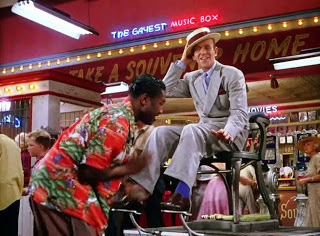 Roger Ebert on the 'Shine on Your Shoes' number in Vincent Minnelli's The Band Wagon/
Roger Ebert on the 'Shine on Your Shoes' number in Vincent Minnelli's The Band Wagon/Minnelli saw Leroy Daniels, a real shoeshine man who sang and danced as he worked, and that not only inspired the number, but got Daniels a trip to Hollywood and a scene where he co-stars with Astaire. He's a gifted performer, his timing as precise as Astaire's, and perhaps because he's the real thing, we sense a freshness and joy. Note, too, Astaire's casual strength when he lifts himself on the arms of the chair so he can kick in mid-air.
Most of the scene's charm is because of Astaire and Daniels, but some, too, was contributed by Minnelli. McElhaney recommends watching the "Shine on Your Shoes" number, but not focusing on Astaire and Daniels: "Instead, only take note of the direction of the extras; watch it again, and only note the function of the decor and the camera movements; then watch it one final time putting all of these elements together." What that exercise would illustrate is that for Minnelli, the whole screen was always in play, not just the foreground and the stars.
More here/
Published on March 31, 2015 15:26
PK
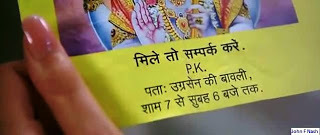 Finally, I caught up with PK. And, I have nothing to add. It is a smartly written movie, sometimes too smart for its own good.
Finally, I caught up with PK. And, I have nothing to add. It is a smartly written movie, sometimes too smart for its own good. On a lighter note, there is one detail I could not handle. It made me very angry. How dare the Archeological Survey of India allow an alien to take shelter in Agrasen ki Baoli (in the film it is Ugrasen ki Baoli) off Hailey Road near Barakhamba Road in Delhi. And, where is the security guard when this reporter girl came to visit the alien?
You see, I have a reason to complain, because the security guard would not allow me, a legitimate citizen, to enter the place after six in the afternoon. Recently, before the film was released, I went there with a friend. We reached the place dot on six and the security guy would not let us in.
(PS. He was a nice person though. After much cajoling, he finally allowed us to have a dekko for a minute. It was, of course, worth it. It is a magnificent monument, even without the water.)
Published on March 31, 2015 15:23
You remember that summer evening, under The North Star, o...
You remember that summer evening, under
The North Star, on a cane mat in the courtyard, when
Your grandmother, with a chuckle and a pat, turned
You into the Flower Prince on a flying wooden horse, on
The quest to find the Silver Princess, the flower-picker’s daughter
You remember how the adventure ended, how
The Flower Prince returned home on the flying horse, with
His Princess, to rule the land until eternity, and how your
Grandmother urged you to close your eyes and how
You turned her wobbly knees into a pillow
You remember those magical few seconds between the end
Of the adventure and the coming of the dreamless sleep, and
You realise, you are trapped in that moment until eternity, between
The adventure and the dreamless sleep, where you are the lone star, on
A dark stage in an empty auditorium
The North Star, on a cane mat in the courtyard, when
Your grandmother, with a chuckle and a pat, turned
You into the Flower Prince on a flying wooden horse, on
The quest to find the Silver Princess, the flower-picker’s daughter
You remember how the adventure ended, how
The Flower Prince returned home on the flying horse, with
His Princess, to rule the land until eternity, and how your
Grandmother urged you to close your eyes and how
You turned her wobbly knees into a pillow
You remember those magical few seconds between the end
Of the adventure and the coming of the dreamless sleep, and
You realise, you are trapped in that moment until eternity, between
The adventure and the dreamless sleep, where you are the lone star, on
A dark stage in an empty auditorium
Published on March 31, 2015 15:23
There is no evening here, in this city of Neon lights and...
There is no evening here, in this city of
Neon lights and sleeping pills, just sunless days
Where you stand in the assembly line of a carousal
Which will take you to your own dream country
You never get into the carriage and you never realise
Rocking horses made of deceit cannot fly
Neon lights and sleeping pills, just sunless days
Where you stand in the assembly line of a carousal
Which will take you to your own dream country
You never get into the carriage and you never realise
Rocking horses made of deceit cannot fly
Published on March 31, 2015 15:18
March 30, 2015
When it comes to modern world-building in movies, no one ...
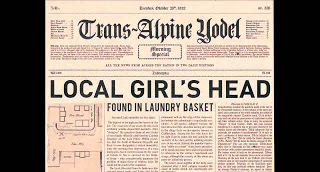 When it comes to modern world-building in movies, no one can surpass Wes Anderson. He cannot even let go a tiny detail. Look at this page of a newspaper from the movie. It appears on the screen for fraction of second, yet, as far as newspapers go, it is a perfect copy. In The Grand Budapest Hotel, his most recent and most popular film till date…
When it comes to modern world-building in movies, no one can surpass Wes Anderson. He cannot even let go a tiny detail. Look at this page of a newspaper from the movie. It appears on the screen for fraction of second, yet, as far as newspapers go, it is a perfect copy. In The Grand Budapest Hotel, his most recent and most popular film till date…
Published on March 30, 2015 05:43
Interstellar & India
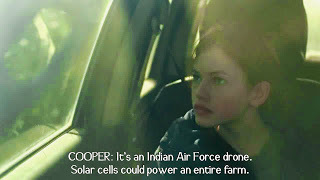
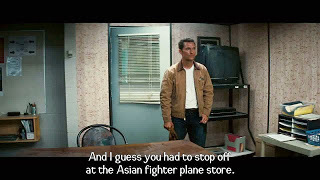
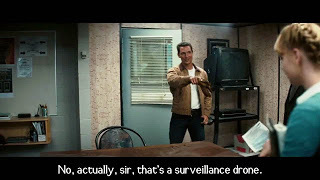
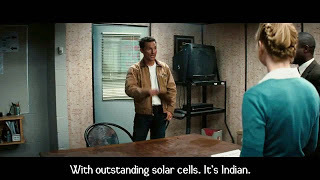
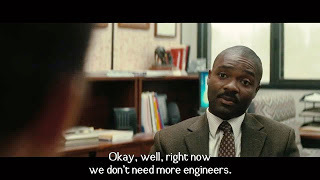
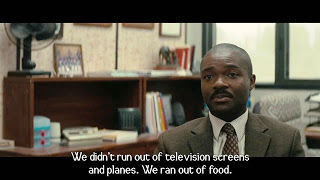

This follows the recent attempts by nationalistic forces to claim that India had had a wonderful scientific past, where they were experts in building flying machines and plastic surgery, among other things.
Take heart. India also has a wonderful future in science, if you want to believe Christopher Nolan’s bleak version of the future as a world on the verge of collapse. As the film begins, in the bleak, dust-filled world, where ‘we did not run out of TV screens but food’, the Indian Air Force fly drones, powered by solar batteries, on American soil, and no one seems to be complaining. These flying machines are so coveted that it forces our hero, Coop, to follow it thought the corn fields, even with a flat tyre. He wants to capture the drone because its solar cells can power an entire firm. Later, he gushes, “…That’s a surveillance drone, with outstanding solar cells. It’s Indian…”
As an Indian, you should be proud.
/
As I watch ‘Interstellar’, and the characters talk about relativity, I am wondering if our Indian sages, who wrote those mystical stories in their holy books, knew something about Einstein’s Relativity Theory as well. Let me explain.
In the movie, three astronauts leave the mother ship to explore an unknown planet near a black hole. They leave one astronaut behind. They spend a less than few hours in the hostile planet filled with knee-deep water body and mindboggling waves. And when they return, 32 years have already passed by, and their colleague, who was left behind, is now an older man, while our brave astronauts are still young.
I am remembering a story I read a long time ago. I think it was a legend about the building of the famous Jagannath temple in Puri, I am not sure. Anyway, the story goes like this.
… there is an interesting prelude involved a deity called Neela Madhab, a Brahmin married to a hunter-chief’s daughter and a handful of mustard grains… we will skip that.
Finally, the king built the temple. It was so magnificent that he was not sure if there were any worthy man who could be the first to offer puja in the temple. Then Narad, the celestial messenger, appeared before the king and suggested that he should invite Lord Prajapati, the creator, himself to inaugurate the temple. The king readily agreed. Narad agreed to show the way. The journey was quick. The king met the white-haired god and stated his business. Lord Prajapati was happy to oblige.
They returned to earth on the same day. Yet, once they landed, everything had changed. The temple was now in ruin and his once so glorious kingdom was a thick growth of forest.
It was then Narad said, like the Dr Brand character says in Interstellar: “This is relativity. I knew the theory. But I was not prepared for this…”
Because one day in Brahmalok, the abode of Lord Prajapati, is equivalent to 108 yugas or ages of man. This is very complex relativity.
I wonder if those sages who told this story knew about the concept of time and gravity and how it works, or was it just flight of fancy and happy coincidences.
/
For a similar story and a lively discussion following Interstellar can be found HERE.
Published on March 30, 2015 05:38



